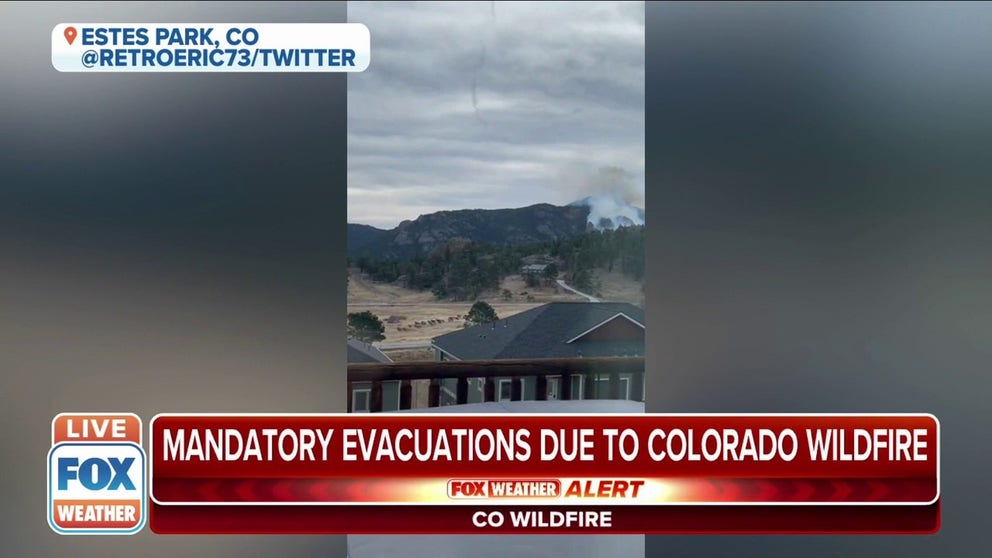Elk spotted seeking shelter from Kruger Rock Fire
Colorado Parks and Wildlife is working to determine the impact the fire will have on the animal's migration.
Not long after the Kruger Rock Fire started in Estes Park, Colorado, elk were seen running from the smoke.
Tuesday morning, the Kruger Rock Fire was reported just before 7 a.m. near Little Valley Road and Fish Creek Road.
About an hour later, a herd of elk was filmed running near Mary’s Lake, located near an evacuation zone.
Elk herd caught running from Colorado wildfire
A herd of elk caught on video escaping the Estes Park wildfire at Mary’s Lake.
While you might feel bad for the elk, Colorado Parks and Wildlife say that they are just doing what they’ve learned over time.
"Animals are very well adapted. They know when there is danger and when there’s not," Angelique Curtis, wildlife biologist for Colorado Parks and Wildlife (CPW), says. "Wild animals do have great survival instincts, and they have evolved with fire."
Curtis says she's seen this type of activity of elk running from fires before. "They were probably going into drainage. All of a sudden, the fire behavior turned on them, and so then they needed to speed up and get out of that area."
Curtis and her team have learned this nature as they’ve been studying elk movement regarding major fires.
In 2020, Curtis and her team at CPW put GPS collars on elk to better help understand the animals’ movement from last year’s Cameron Peak Fire. The Cameron Peak Fire is the largest fire in Colorado history and was located just northwest of Estes Park.
CPW used their location data to learn how wildlife react and move when fire comes across the landscape.
"We don’t necessarily know the effects that this fire is going to have on wildlife in general. It’s still in the learning process. There needs to be more research done on how mega-fires like this affect the wildlife that’s out there and how we should best manage it," Curtis said.
The GPS collars will provide enough data in the first three years of deployment to design a population model for the herd. The study will last four to five years, with the remaining data collected after year three from the collars being used to refine the model's parameters.
"We have elk with GPS tracking collars on close to the area of the Kruger Rock Fire," Jason Clay, PIO for CPW says. "If for some reason we do have elk we are tracking in the area; we'd probably look to do something similar to what we did last year with the Cameron Peak Fire."
Once more data is compiled, the new population matrix model will be built with an understanding of the areas of greatest conservation, migration corridors, calving areas and habitat enhancement opportunities, all designed to keep the elk herds healthy and within the management objectives, CPW says.
